XRP is the digital asset native to the XRP Ledger (XRPL). It is designed to facilitate fast and low-cost cross-border transactions, making it an attractive option for financial institutions and remittance companies. In fact it describes itself as the “blockchain built for business”.
Unlike many other cryptocurrencies, XRP is not mined. Instead, all 100 billion XRP tokens were created in 2012 when the network launched, with the majority initially held by Ripple Labs. This makes it an attractive alternative for businesses looking to utilize blockchain technology for payments, tokenization, and other use cases.
What are the key Features of the XRP Ledger?
- Decentralized: The XRPL is maintained by a global community of software engineers, server operators, users, and businesses. This ensures that no single entity controls the network.
- Public: All transactions on the XRPL are public and transparent, allowing anyone to view and audit the ledger’s history.
- Built for Business: The XRPL is designed to be scalable, fast, and affordable, making it well-suited for business applications.
- Sustainable: The XRPL’s consensus protocol doesn’t require mining, making it a more environmentally friendly option than some other blockchains.
How does the XRP Ledger Works?
- Validators: The XRPL relies on a network of servers called validators to reach consensus on the order and outcome of transactions. Anyone can operate a validator, and the network currently has over 120 active validators.
- Consensus Protocol: The XRPL’s consensus protocol allows validators to agree on the validity of transactions every 3-5 seconds. This ensures that the ledger is updated quickly and efficiently.
- Transaction Confirmation: Once a transaction is validated by the network, it is considered confirmed and irreversible.
- XRP: XRP is the native digital asset of the XRPL. It is used to facilitate transactions and provide liquidity on the network.
What are the origins and development timeline of XRP?
- 2011: Development of the XRPL began, with a focus on creating a more sustainable and efficient alternative to Bitcoin.
- 2012: The XRPL launched with its native currency, XRP.
- 2013: OpenCoin, the company behind the XRPL, was rebranded to Ripple Labs.
- 2020: The XRPL Foundation was launched to support the development and adoption of the XRPL.
What are some of the benefits of the XRP Ledger?
- Fast Transactions: The XRPL can process transactions in seconds, making it ideal for real-time payments.
- Low Fees: Transaction fees on the XRPL are very low, making it a cost-effective solution for businesses.
- Scalability: The XRPL is designed to handle a high volume of transactions, making it suitable for large-scale applications.
- Security: The XRPL’s consensus protocol and cryptography ensure the security and integrity of the network.
What exactly is XRPL Ripple Ledger?
XRPL stands for the XRP Ledger, which is the decentralized blockchain network that processes and validates XRP transactions. The XRPL is maintained by a network of independent validators that confirm transactions and ensure the integrity of the ledger. One of the key features of the XRPL is its consensus mechanism, which does not rely on mining like proof-of-work networks such as Bitcoin. Instead, the XRPL uses a unique consensus algorithm known as the Ripple Protocol Consensus Algorithm (RPCA).
One of the main differences between XRP and XRPL is their function within the Ripple ecosystem. XRP serves as the native asset of the XRPL, acting as a bridge currency for cross-border payments. Transactions on the XRPL can be denominated in any currency, with XRP used as a liquidity tool to facilitate the exchange. In contrast, XRPL is the underlying technology that powers the XRP Ledger, providing the infrastructure for secure and efficient transactions.
Both XRP and XRPL have a range of use cases beyond cross-border payments. XRP can be used for micropayments, smart contracts, and even tokenizing real-world assets. The XRPL can also support the issuance of other digital assets, creating a vibrant ecosystem of tokens and applications. Developers can build on top of the XRPL using the XRP Ledger API, enabling them to create custom solutions and integrations.
In conclusion, while XRP and XRPL are closely linked, they serve distinct purposes within the Ripple ecosystem. XRP acts as the digital asset that facilitates transactions, while XRPL provides the underlying technology and infrastructure for the XRP Ledger.
Use Cases for the XRP Ledger:
- Payments: The XRPL can be used to send and receive payments quickly and efficiently, both domestically and internationally.
- Tokenization: The XRPL can be used to tokenize assets, such as real estate, stocks, and bonds.
- Decentralized Finance (DeFi): The XRPL can be used to build decentralized financial applications, such as lending platforms and decentralized exchanges.
- Supply Chain Management: The XRPL can be used to track goods and products as they move through the supply chain.



